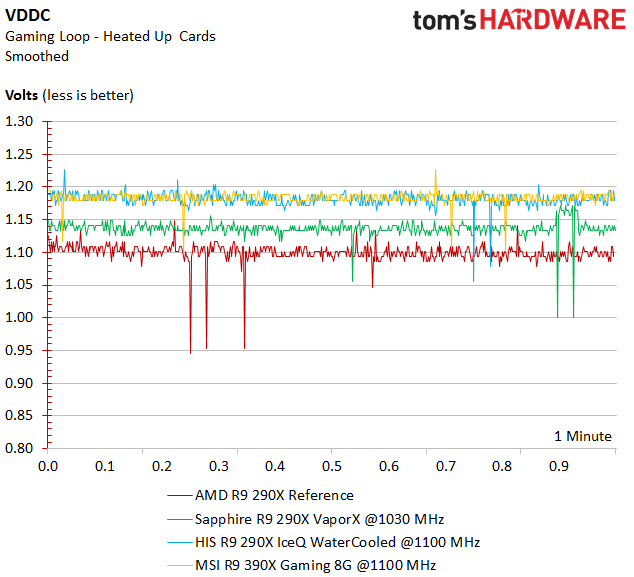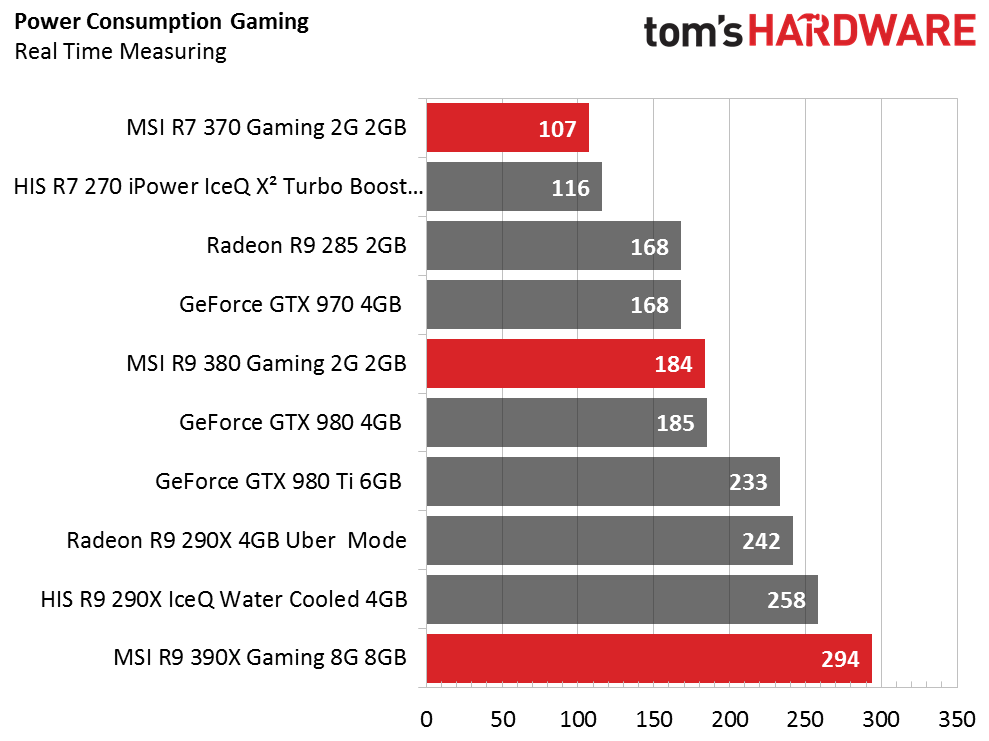AMD Radeon R9 390X, R9 380 And R7 370 Tested
AMD's 300-series Radeons dropped today, and we've got three MSI cards in the lab: the R9 390X Gaming 8G, the R9 380 Gaming 2G and the R7 370 Gaming 2G.
Gaming Power Consumption
Our readings start to get interesting as a result of higher clock rates and the elevated voltages that enable them. Let’s take a look if and where AMD went with the nuclear option.
MSI R9 390X Gaming 8G
We again start with the highest-end model in AMD’s rebranded 300 series. Its 294W measurement is almost 50W more than what we measured for the Radeon R9 290X topped with a hybrid cooler, which offers practically the same performance! These results are more than just worlds apart.
| Header Cell - Column 0 | Minimum | Maximum | Average |
|---|---|---|---|
| PCI-E Total: | 48.80 W | 452.40 W | 252.47 W |
| Mainboard 3.3V: | 2.31 W | 3.96 W | 3.00 W |
| Mainboard 12V: | 26.84 W | 49.40 W | 38.08 W |
| VGA Card Total: | 83.16 W | 492.10 W | 293.55 W |
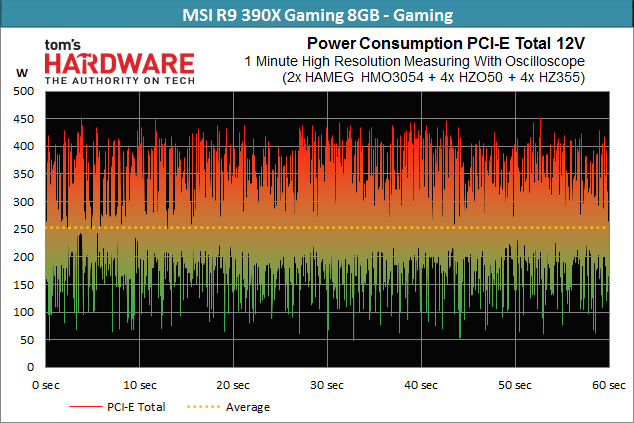
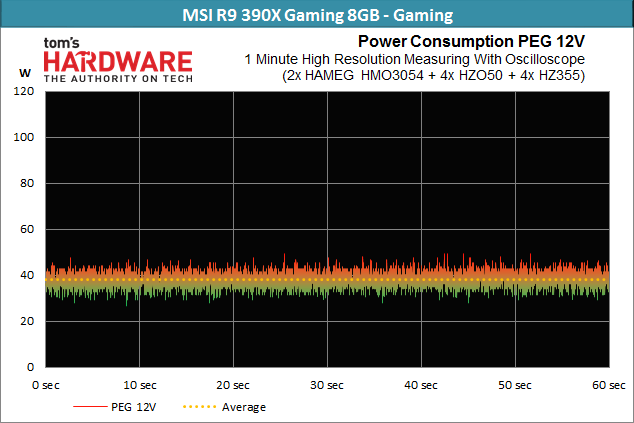
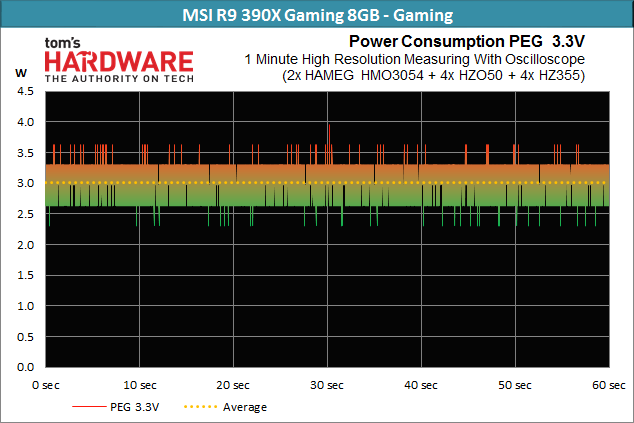
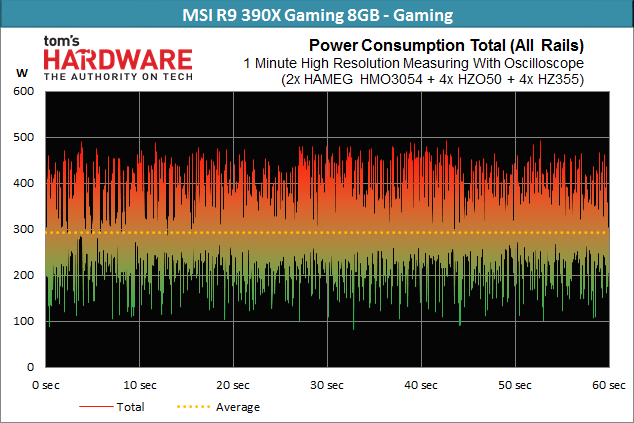
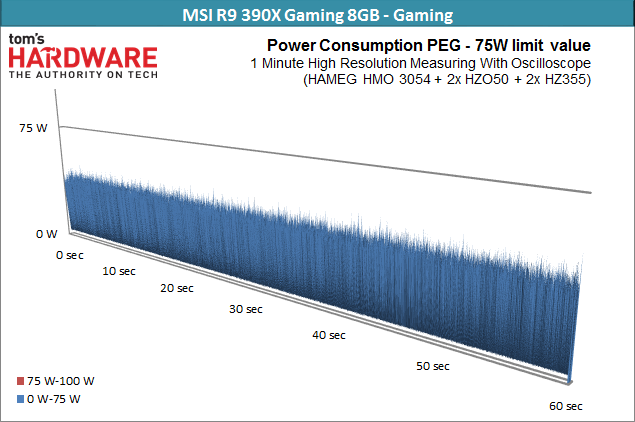
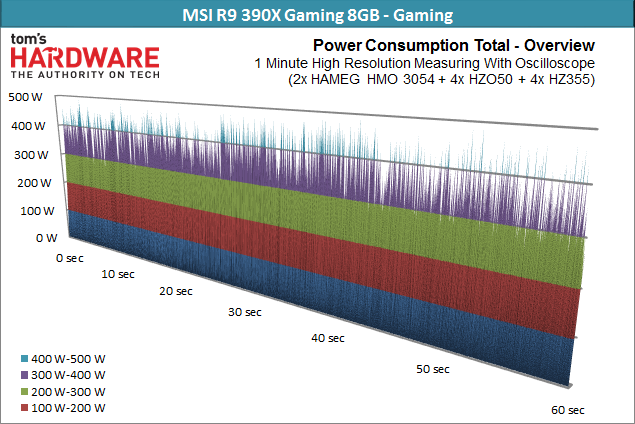
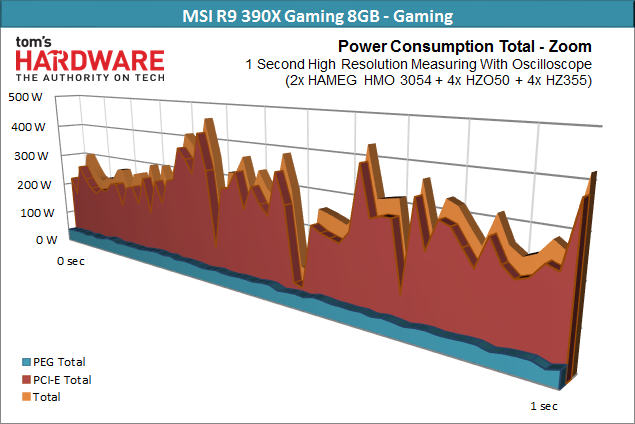
Voltage
Next, we’re comparing voltages between the different Hawaii XT and Grenada XT graphics cards. The first observation we make is that voltages rise along with clock rate. What’s really astonishing is that both the MSI R9 390X and older HIS R9 290X IceQ WaterCooled have a virtually identical curve! This means that the voltages are generally identical, almost assuring us that there weren’t any improvements made from Hawaii XT to Grenada XT.
Apart from the fact that the voltages increase to make sure AMD’s GPU can hit 1100MHz reliably, the leakage currents due to the R9 390X Gaming 8G’s temperatures at higher power levels play their part as well.
MSI R9 380X Gaming 2G
Registering almost 185W, the MSI R9 380 Gaming 2G comes in approximately 10W higher than its comparison card. This is alright, given the small performance increase attributed to its higher frequencies. Nothing has changed regarding the direct comparison to Nvidia’s graphics cards, though.
| Header Cell - Column 0 | Minimum | Maximum | Average |
|---|---|---|---|
| PCI-E Total: | 9.76 W | 229.36 W | 131.29 W |
| Mainboard 3.3V: | 0.00 W | 1.32 W | 0.63 W |
| Mainboard 12V: | 31.72 W | 75.40 W | 52.77 W |
| VGA Card Total: | 47.02 W | 291.86 W | 184.68 W |
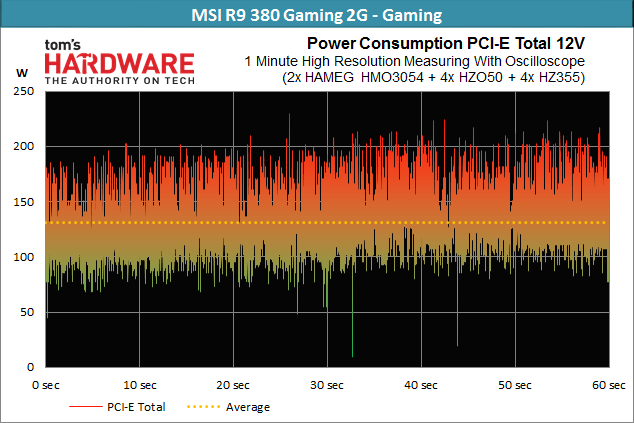
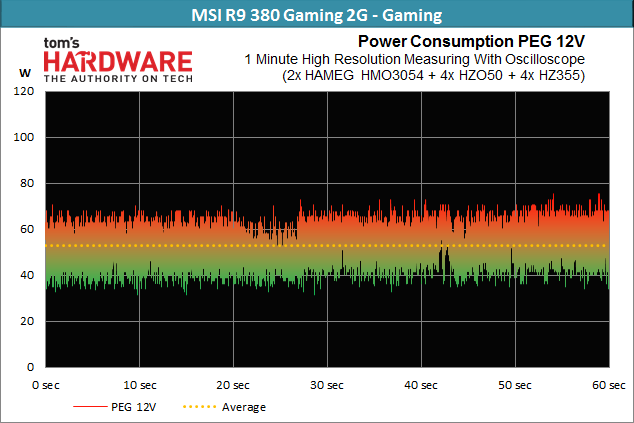
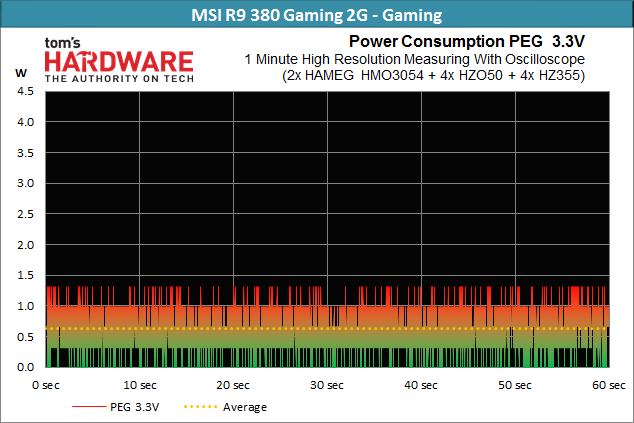
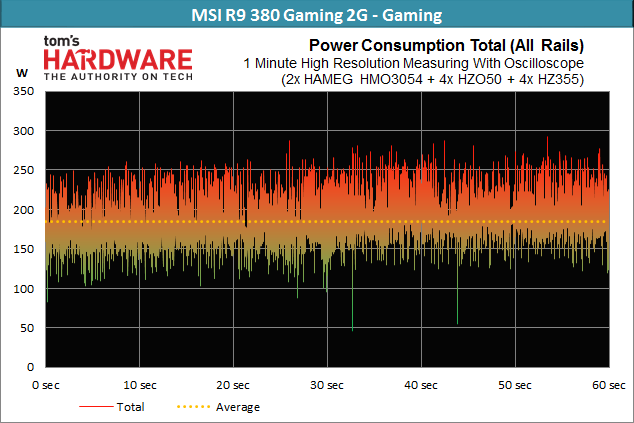

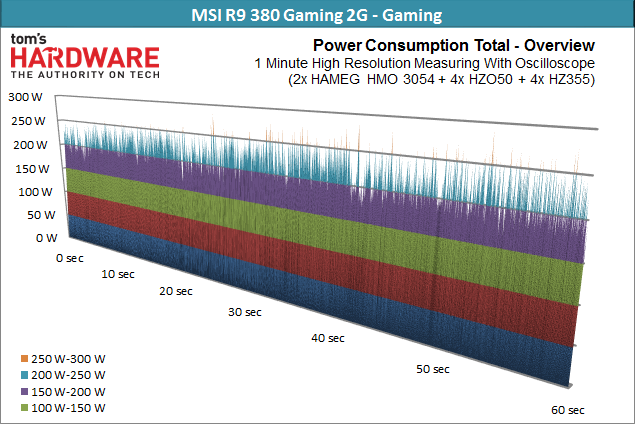
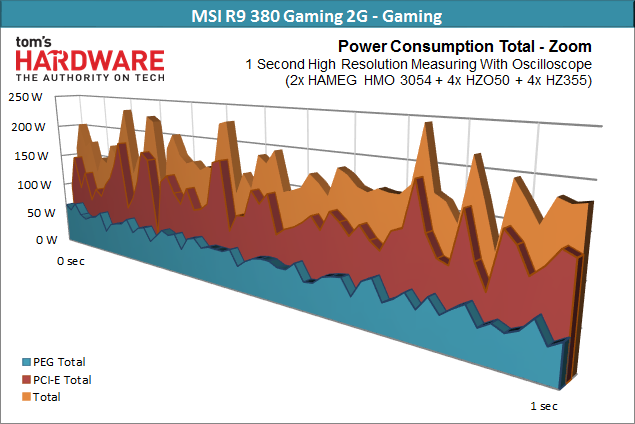
MSI R7 370 Gaming 2G
This graphics card has the lowest power consumption again. Taking into account that its GPU is three years old and operates approximately 14 percent slower (on average) than an overclocked GeForce GTX 960 at the same power consumption, the only possible conclusion is that Pitcairn is an impressive piece of silicon. The oldest card in today’s field by far really doesn’t have to hide from the competition, especially since its price speaks volumes as well.
One possible caveat is that we might just have gotten a really good sample. Then again, maybe the production process is so mature by now that this is truly representative of retail hardware.
Get Tom's Hardware's best news and in-depth reviews, straight to your inbox.
| Header Cell - Column 0 | Minimum | Maximum | Average |
|---|---|---|---|
| PCI-E Total: | 14.64 W | 85.68 W | 51.16 W |
| Mainboard 3.3V: | 2.64 W | 4.29 W | 3.52 W |
| Mainboard 12V: | 17.08 W | 88.40 W | 52.72 W |
| VGA Card Total: | 35.02 W | 172.14 W | 107.41 W |
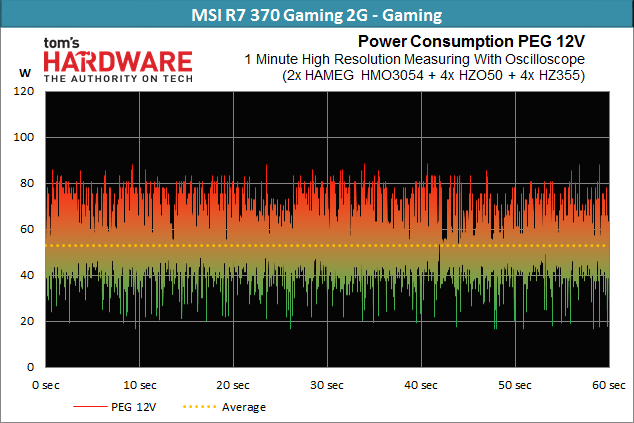
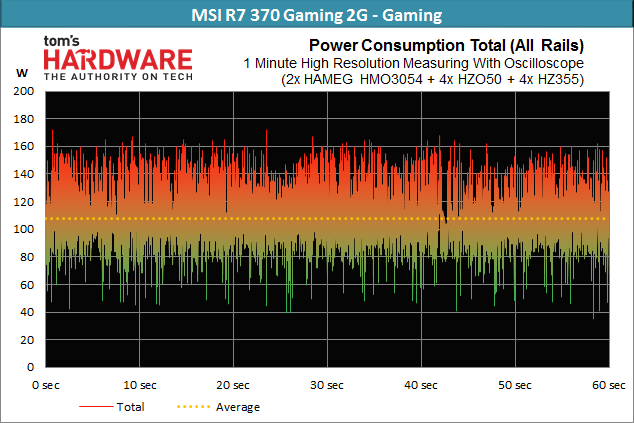
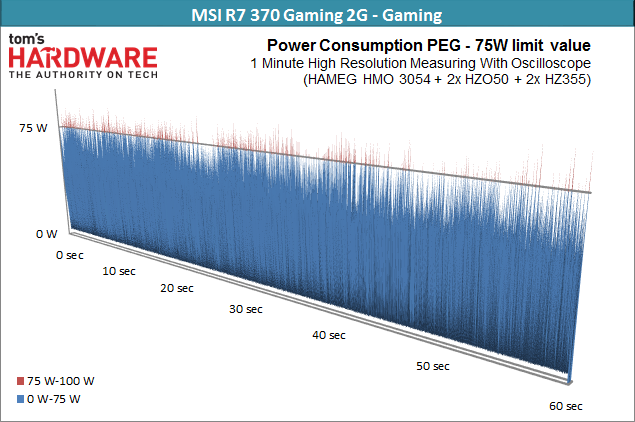
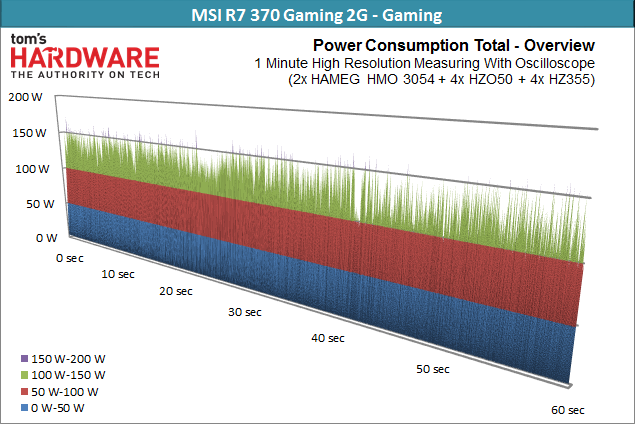
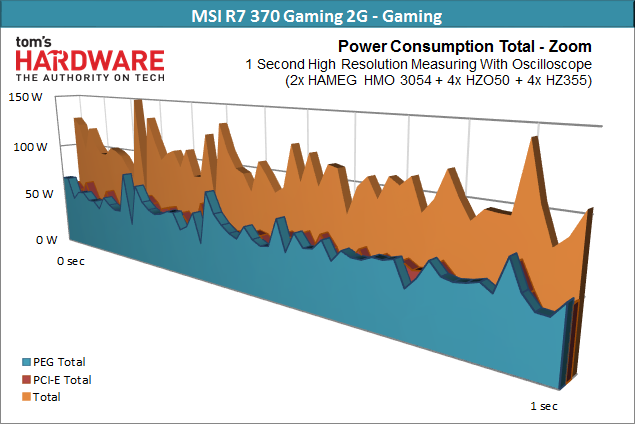
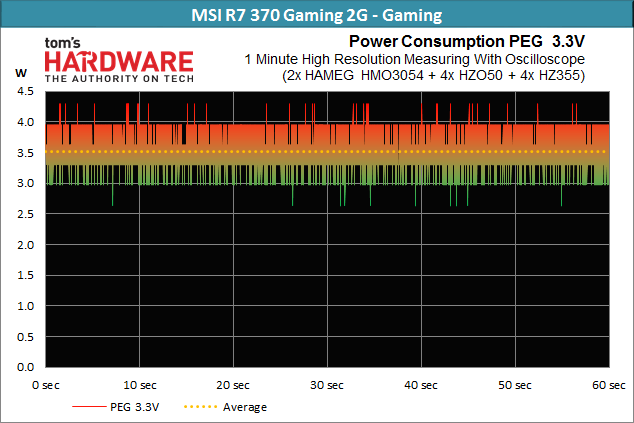
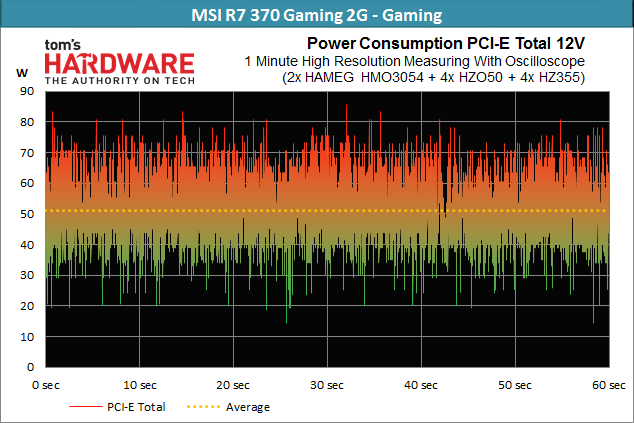
Current page: Gaming Power Consumption
Prev Page Idle Power Consumption Next Page Stress Test Power Consumption
Igor Wallossek wrote a wide variety of hardware articles for Tom's Hardware, with a strong focus on technical analysis and in-depth reviews. His contributions have spanned a broad spectrum of PC components, including GPUs, CPUs, workstations, and PC builds. His insightful articles provide readers with detailed knowledge to make informed decisions in the ever-evolving tech landscape
-
Grognak 390X at 4K is the only one showing anything that could be called an improvement and that's entirely due to the additional RAM, which you can already get on a 290X. I fear for the future.Reply -
envy14tpe Again I am left disappointed....AMD please stop doing this to me. So what I learned is the 390X is the same as the 290X at 1440p or below (which is 95% or more of gamers) and the 390X only excels at 4k but still only on par with the 980 (non ti). Looks like I'm abandoning AMD for my next GPU. damn it.Reply -
FormatC ReplyWhy did you ignore 390?
I can only test what I have. Too less samples :(
The 390X is'nt a bad card per se - it depends a lot at the price and your personal preferences. -
fudoka711 Wait, I think I'm misunderstanding something. Is the 390x a rebranding of the 290x, but costing $100 more??Reply -
HideOut ReplyNice to see 980 Ti still stomps everything, glad I bought one... a wise investment!
These are rebadge cards, their new cards are due out in days. Fanboy -
de5_Roy MSI R9 390X Gaming 8G's texture fillrate in the spec table (1st page) may have been incorrect. the gpu-z screeny shows 193.6 GTexels/sec.Reply
